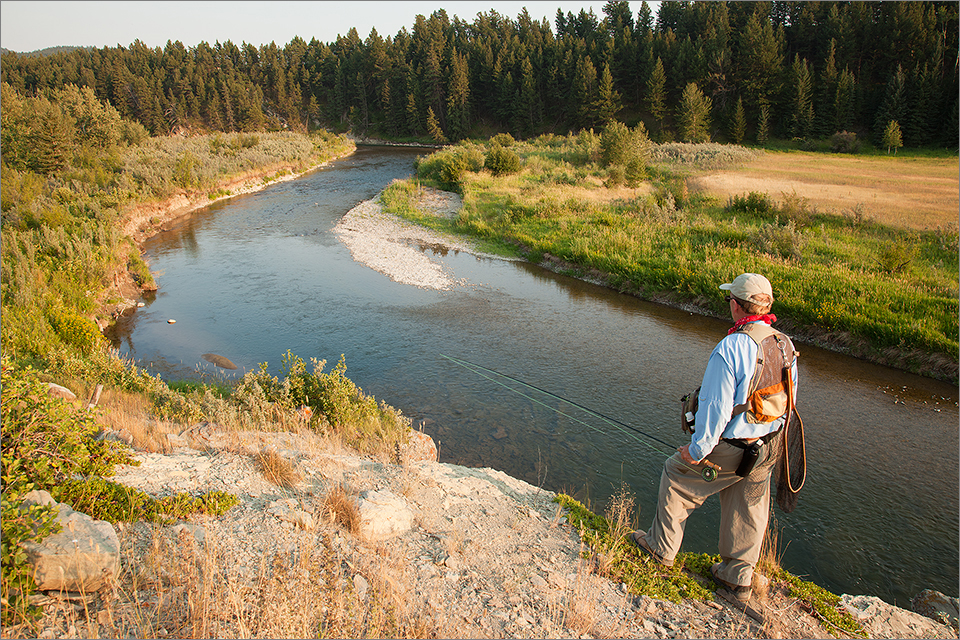
It’s that time of the season where some of the best dry-fly fishing on our local streams occurs late in the day. This is especially true in places like the Crowsnest River, where bright, sunny weather, combined with low, clear water conditions, can cause larger trout to wait until just before dark before they start to feed. If you are on the water at this time and are patient enough for the evening hatch to begin, you stand a good chance of catching some nice fish.
Some nights are better than others, and there’s no way of knowing in advance what the fishing will be like from one evening to the next. It helps if you’re familiar with the river and know where to look for big trout. Then, it’s just a matter of hanging around until they start showing themselves. Once you find a trout that’s feeding on the surface, it’s up to you to try and fool it.
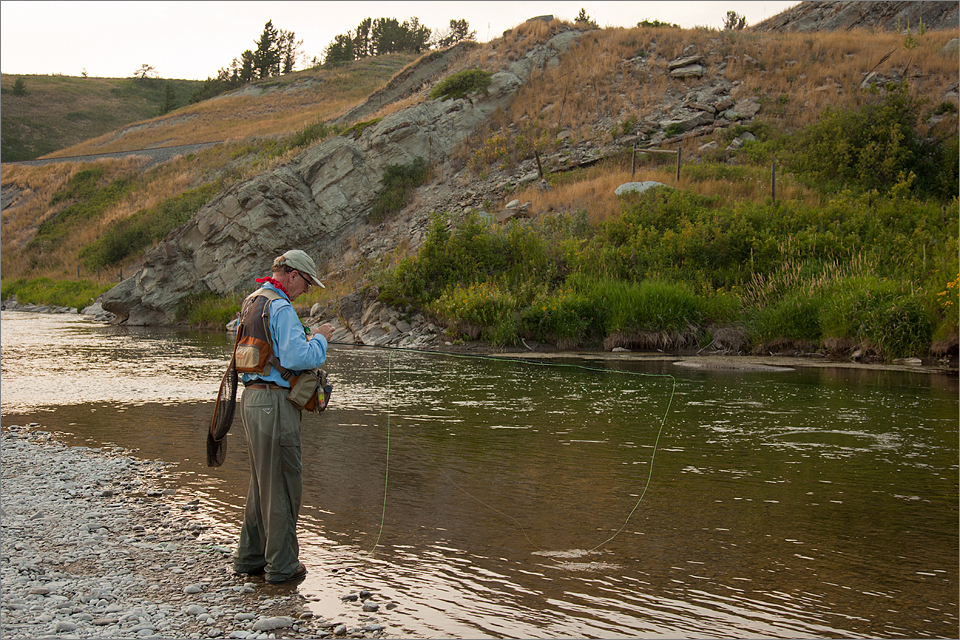
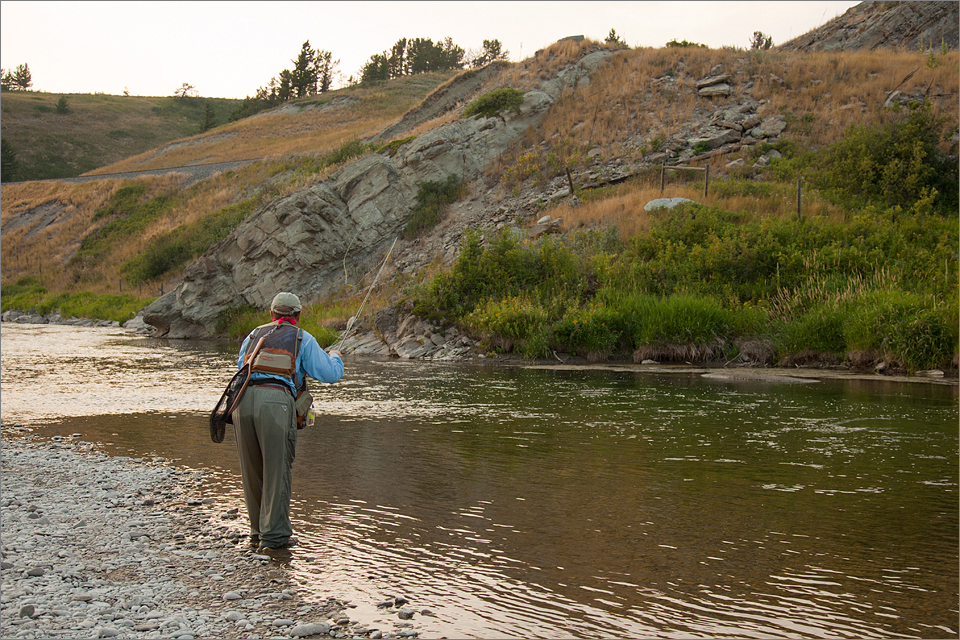
Unless trout are rising, it’s difficult to know exactly where the larger ones are holding. If you start wading in the river too soon, you might spook the fish. If you start blind-casting, it’s usually the smaller, more aggressive fish that will take your dries. Usually, it’s best to wait for the bigger trout to begin to feed on the surface before you start fishing. Then, you can approach them and cast to the ones you would like to catch. Patience is a virtue when it comes to this kind of fishing, and it’s always better to let the fish make the first move.
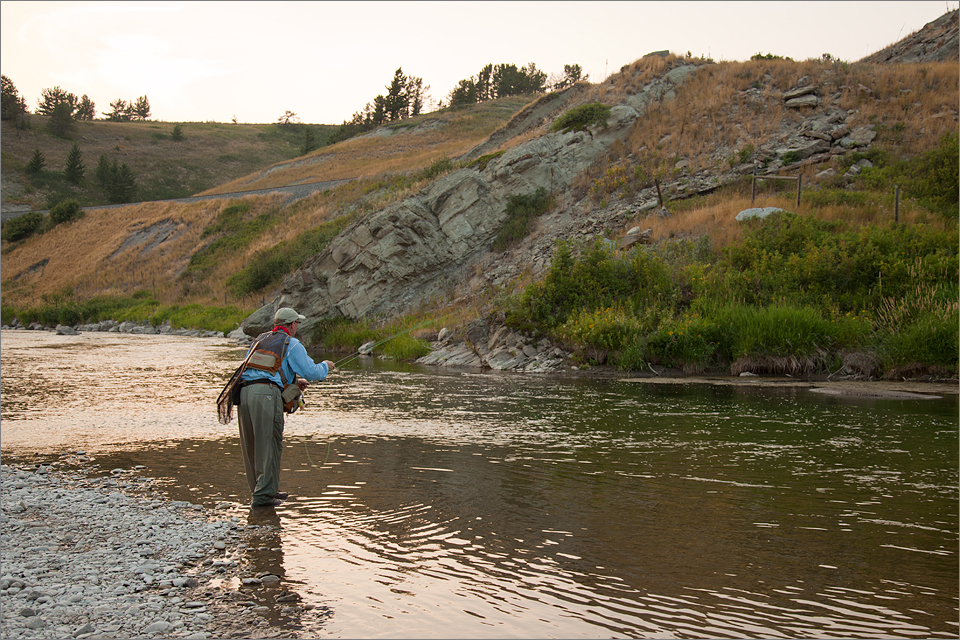
In order for trout to rise, they need something on the water for them to rise to. A good hatch of mayflies or caddisflies will usually suffice. Keep in mind, trout can be selective when feeding on these insects. When this happens, you will likely have to match the hatch, in order to catch them.
There’s no rhyme or reason why trout can be so fussy sometimes. Choosing the right fly to attach to your leader can make all the difference between success and failure. One night, fish might grab any and every fly pattern drifting by their noses, while the following night they might not look twice, and thumb their noses at everything you offer them.
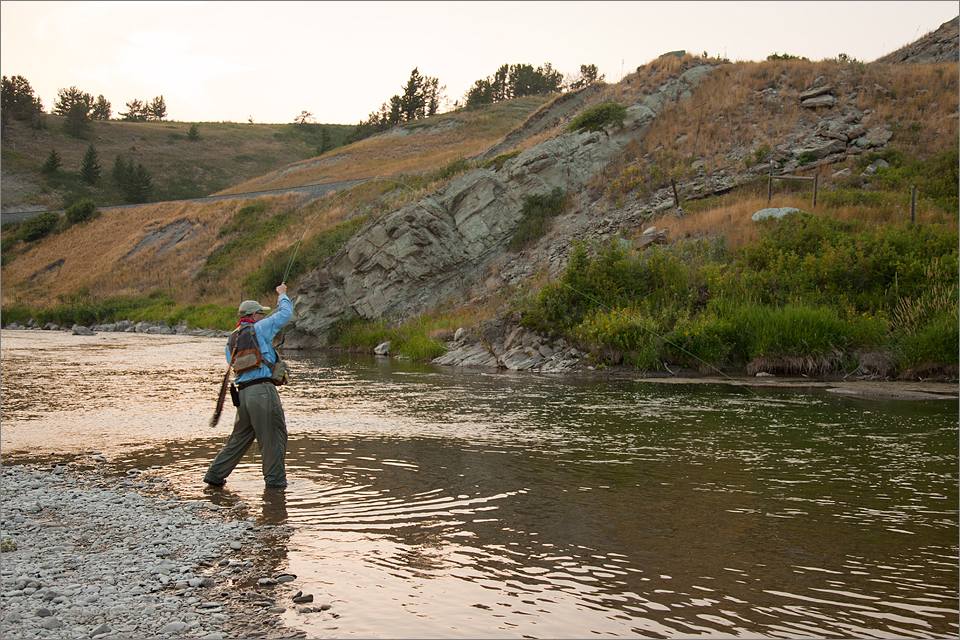
When searching the river for big fish at this time of the evening, don’t overlook shallow water near shore. A 20-inch trout is quite happy to hold in less than 12 inches of water, providing there is something available here for it to eat.
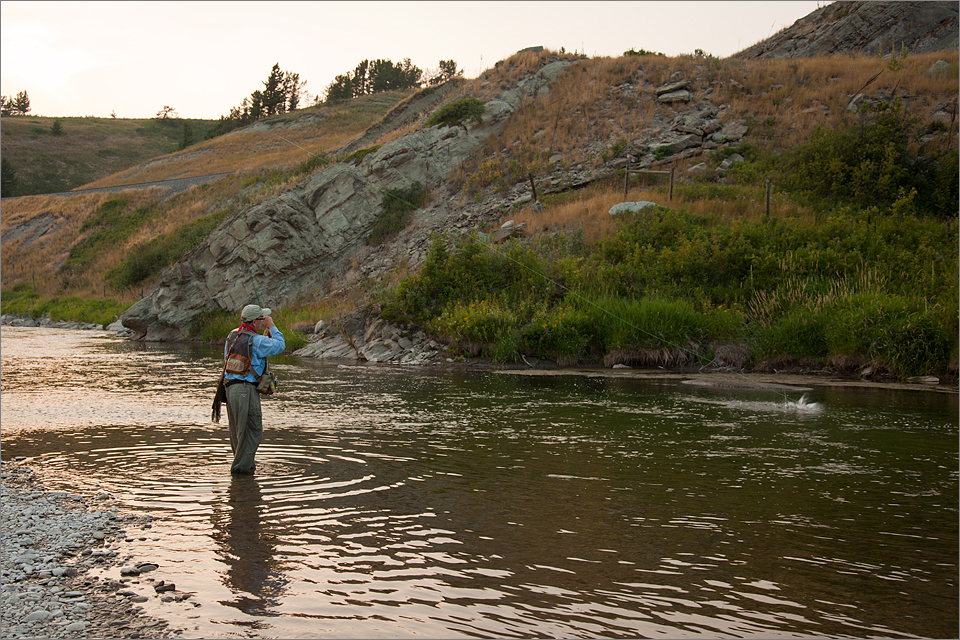

The fishing can be fast and furious during those last fleeting minutes between dusk and total darkness. Often, there is less than half an hour where you go from casting to rising trout, to where you realize you will need a flashlight to find the way back to your vehicle. Even though you can still hear trout taking naturals on the surface, it has become too dark to continue fishing. Oh well, there will be another opportunity tomorrow, and hopefully, there will be another evening hatch!
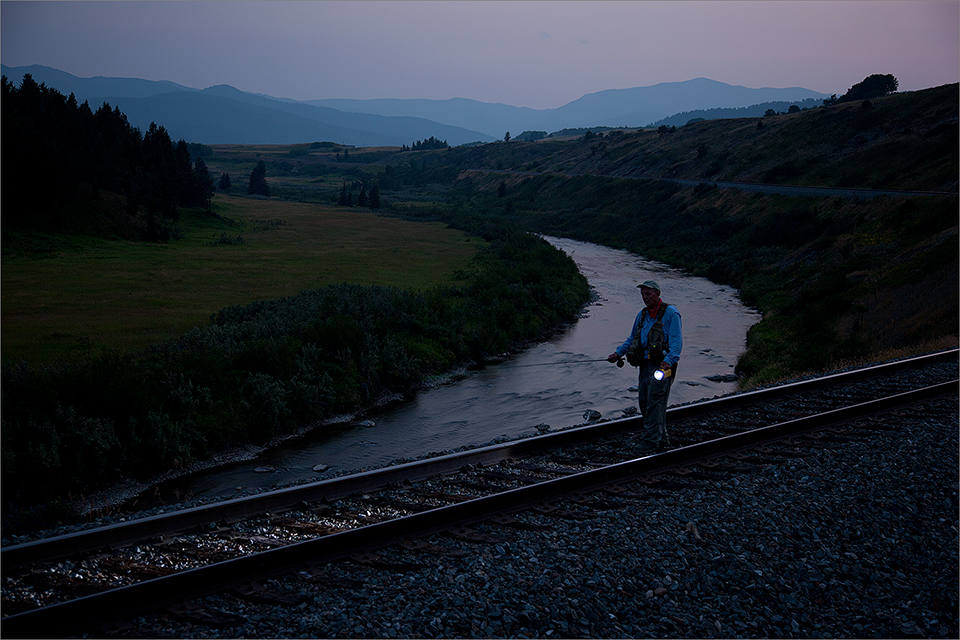

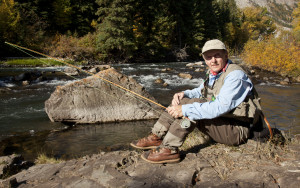
4 Comments
Vic: Sage advice on how to fish the Crow during the “dog days of summer”. The first photo belongs on the cover of a fly fishing mag! Great lighting and the blue shirt pops! Also like the action sequence pics; the strike and then fish leaping; and final flash light photo…end of the outing.
robert
Hi Robert,
I took the photos last Thursday. The lighting was really nice, just before sunset. I think I spent more time looking for the right place to set up my camera and tripod, than I did fishing. Fortunately, there were a few good fish rising when I got there, so it was just a matter of getting enough casts over one of them before it came up to my dry. I’m sure you know the spot on the river. Everything fell into place – the fish and the camera cooperated at the right time. There was virtually no wind blowing, which made casting pretty easy. It doesn’t always happen like this, at least not for me. As you know, it’s a great section of river to fish in the evening, providing you can get there before someone else. Looking forward to seeing the next post on your blog. Thanks for your comments!
Wonderful read and photos!
Hi Kurt,
Thanks for taking time to visit. I’m glad you enjoyed the article and photos.